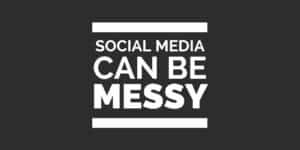I lied in my last post about writing this one next, but I didn’t do that on purpose, I forget about the holidays sometimes and what it can do to time. I am following through with it though and writing about the importance of the two major types of content you are going to need to publish for your brand.
If you don’t remember, my last post on this topic was about the two places where you can build your personal brand. Hopefully you’ve made a decision and have started building your brand.
If you are going to have a presence online and show people your work or share your ideas, there are two types of content you can’t do without. Blog posts and portfolio items are a must, they show your work and show your thoughts or ability.
One of the more important types of content, and one that is going to be updated most is your blog posts, which is where I’ll start. Your portfolio is still important if you need one for your type of work, but it’s a longer term content type which doesn’t usually have a date. I’ll cover the portfolio in my next post.
Blog Anywhere
No matter where you’ve chosen to make your brand hub (brand page or website), blogging should be a part of it. If you chose a brand page, it may not have what you need built-in to start a blog. In this case you have the choice of blogging platforms to check out.
The biggest problem you will run into with using a separate blogging platform from your brand page is that it will fragment your brand. There’s always the chance you’ll confuse visitors or lose trust if your brand is too spread out across sites. You can’t stop all fragmentation (Twitter, LinkedIn, etc) but you can decrease it with a website.
Owning your content and your brand are the biggest benefits of a website. You’ll be able to maintain your original blog posts on your website through WordPress which makes your brand stronger and more consistent.
Even if you do blog on your website as a primary source, there are other places you can blog too which will help spread your writing to a new audience.
So, whether your post on your website or you have a brand page and need to use another site to blog on, here are some suggested places to blog:
- LinkedIn (a great place to use as a secondary blogging platform)
- Medium
- WordPress.com (only an option if you have a brand page, not a website)
You may not want to publish on all these platforms. You may spend more time than it’s worth modifying your content and putting into each one.
Determine where your audience is, and focus on that.
Take Ownership
I wanted to take this chance to say one more time the importance of taking ownership of your brand. If you chose the brand page route, you’ve at least taken a good step in setting you personal brand up online.
If you are not putting much written content out there though mostly sticking to Twitter updates, LinkedIn updates, and writing for other publications, you should be OK. If you are publishing a lot of your own content in the form of blogs, you’ll want to eventually have a home for your content that you own.
Other platforms are great for publishing as a secondary source, but your primary source should always be owned by you.
Take ownership of your brand, if you don’t then somebody will. Don’t let another site own your brand and choose what they do with your visitors. Your content on other platforms becomes a way for them to hold the attention of visitors, and they’re going to send that attention to someone else’s content.
Your brand becomes fragmented and loyalty to your content tends to suffer when the sites you use to publish try to skim your visitors attention to benefit them.
Build your own brand, your own audience, and experience loyal visitors who comment regularly and get involved with your message. They’ll add more to your writing, discussion, and learning than anybody on any other site even if you might limit your audience a bit more.
Check out the next post (Where Should I Build My Portfolio) in this series which covers some of the options for publishing your portfolio and a little about what I’ve learned in the process of publishing mine.




1 comment
Nice post, you are really clarifying stuff in a way many people can understand it. It would be interesting that you share your experience in using first your blog, then repost later on LinkedIn. What are your results?
Obviously LinkedIn is nice to be discovered by totally new readers. You are also bringing readers to LinkedIn when you share a link. Those readers may very well end up reading the next post which is not your. So it’s a clear benefit for them.
In term of bringing value back to you, does it work? There are no subscription buttons on Li, a page view means barely nothing. The time spent on your post will be the only thing you gain while a visitor to your post may click on a related post.